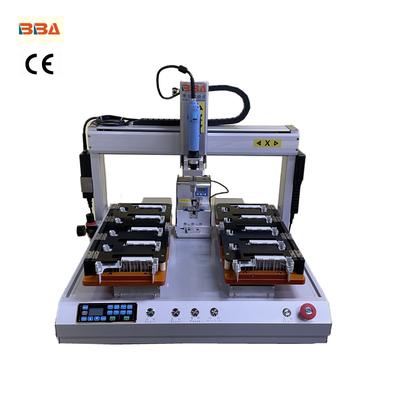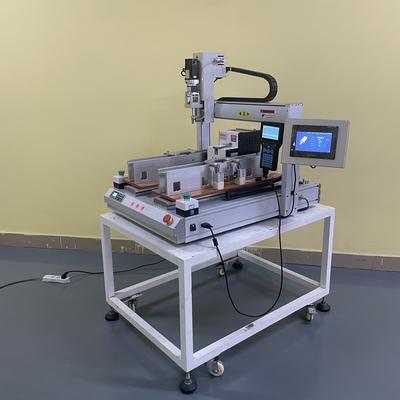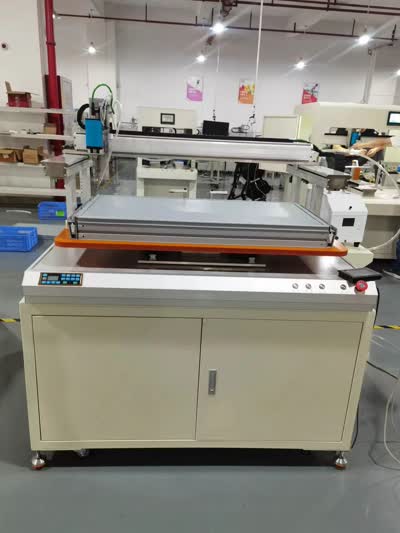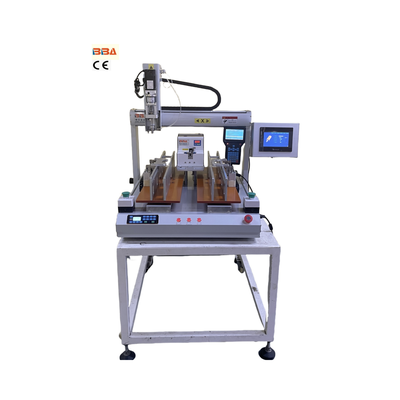Industrial Automation Case Studies: Transform Success Stories into SEO Assets & Leads
| Product Name | Applicable industries |
| Automatic Screw Feeder | Industrial Control Panel Assembly |

In the competitive landscape of industrial automation, businesses constantly seek marketing avenues that effectively reach their highly specialized audience. Case studies, documenting real-world applications and quantifiable results of your products, represent not just powerful sales tools but exceptional SEO content assets. Leveraging them strategically can drive significant organic traffic and generate qualified leads.
Traditional marketing collateral often focuses on technical specifications and product features. While essential, potential industrial buyers operating with significant capital investments and operational risks at stake demand more. They actively search online for proven solutions to specific problems like "reduce packaging line downtime," "improve CNC machine OEE," or "implement energy-saving drives." Case studies deliver precisely this: tangible proof.
By transforming detailed case studies into optimized articles, you tap into several powerful SEO and buyer journey advantages:
- Targeting Critical Keywords: Case studies naturally incorporate the precise, long-tail keywords your prospective customers use. They address specific industries (e.g., automotive parts manufacturing, pharmaceutical packaging), precise application challenges (e.g., SCADA integration with legacy systems, robotic arm precision calibration), measurable outcomes (e.g., 15% OEE increase, 99.99% throughput reliability), and the business impact (reduced waste, lower energy costs, faster ROI). This specificity matches high-intent search queries that generic content often misses.
- Building Trust & Credibility: Faced with complex and high-value purchasing decisions, automation engineers, plant managers, and operations directors require demonstrable proof. Reading about how a similar company overcame identical challenges using your product establishes instant authority and reduces perceived risk. Quantifiable results (percentages, time saved, cost reductions) are crucial credibility builders that generic blog posts lack.
- Addressing Complex Buyer Journeys: The industrial sales cycle is lengthy and involves multiple stakeholders. A well-structured case study article speaks to different levels - technical details for engineers, ROI figures for financial controllers, and operational benefits for plant managers – all within one piece of content readily available during their research phase.
- Generating High-Value Backlink Opportunities: Compelling case studies documenting significant results are inherently link-worthy. Industry publications, associations, and even clients featured might link back to your article as a reference, boosting your site's domain authority.
Effectively Repurposing Case Studies for SEO:
Converting a standard case study into a high-performing SEO article requires strategic repackaging:
- Deep Keyword Integration: Don't just add keywords; build the narrative around them. Structure subtitles around core problems and outcomes: "Automating High-Mix Cable Manufacturing For 30% Productivity Gain," "Solving PLC Downtime in Food Processing with Predictive Maintenance."
- Focus on the Problem & Solution Journey: Dedicate significant space to understanding the specific pain points faced by the client. Detail the selection criteria used for your solution and the implementation process, highlighting any unique challenges overcome. Show, don't just tell.
- Quantify Everything Possible: Go beyond vague benefits. Clearly state metrics like "reduced changeover time from 45 to 10 minutes," "decreased energy consumption by 22%," or "achieved 12-month ROI." Ensure these figures are prominently featured throughout the text and headlines.
- Technical Relevance: While emphasizing outcomes, incorporate relevant technical context without overwhelming the non-specialist. Mention the types of equipment involved (e.g., servo drives, HMI systems, specific PLC models generically) or the automation principles applied (e.g., closed-loop control, vision system integration).
- Optimized Structure & Readability: Use clear headings, concise paragraphs, bullet points (as illustrated here), and consider including diagrams or process flow charts (if permissions allow). Ensure fast loading times and mobile responsiveness.
- Clear Calls to Action (CTAs): End with specific CTAs relevant to the content's intent, such as "Download the Detailed Technical Case Study," "Contact Our Engineers for a Similar Solution Assessment," or "Explore Our Solutions for [Specific Industry/Challenge]".
Beyond the Article: Maximizing Impact
Avoid limiting your SEO case study to a single page. Amp up its reach:
- Promote Strategically: Share excerpts and results via LinkedIn targeting relevant industries/job titles, industry forums, and email newsletters.
- Internal Linking Power: Link to relevant case study articles from product pages highlighting the specific technology used and from solution pages addressing the problem solved.
- Leverage for Paid Campaigns: Use compelling results snippets as ad copy or landing page validation points in PPC campaigns.
Case studies bridge the gap between technical capability marketing and genuine customer need. Investing in transforming them into SEO-optimized articles positions your industrial automation company as a problem-solving partner. By providing hard evidence and speaking directly to the specific challenges your audience searches for, you attract genuinely interested prospects firmly rooted in the buying cycle, fuelling sustainable organic growth and lead generation.


